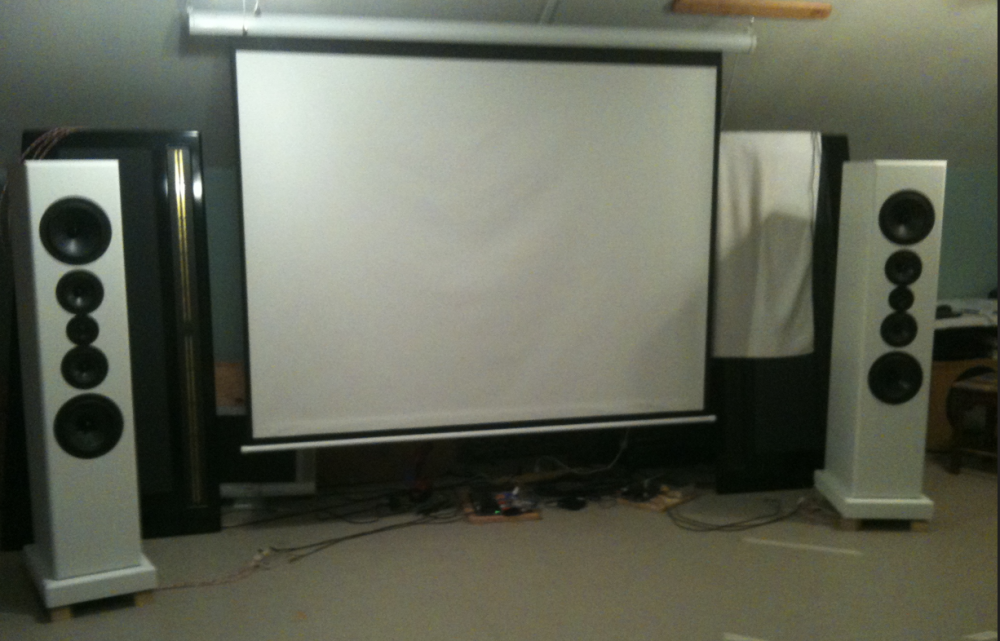Site Links
Howdy, Stranger!
It looks like you're new here. If you want to get involved, click one of these buttons!
Quick Links
Categories
Who's Online (0)
WMTMW appeal
So ya see wilson audio, PBN and other FB as well as in other diy forums people yearning for the big, 6 ft tall+ speakers with low frequency drivers up in the air. I myself have not gone to enough shows, or the lack of nearby audiophile friends (we are rare) to know the experience. Though I did a few months ago visit a person in my region who had apogee planars with the ribbon tweeter vertical strip. I was impressed by the wall of sound though disturbed how vulnerable they make amps with their speaker load, at least when I was doing some realtime electrical measurements. With all the hearsay of planar loads on amps and weirdness I was seeing on meter, I had to walk away from making him a custom amp.
Anyway... I want to hear others impressions of big tall speakers (giraffe coffins?) using the WMTMW type arrangement. Is it more for big rooms, people wanting that wall of sound? Personally I like speakers with wide dispersion that disappear so to speak. Though also tainted by my own constraints of 2 channel in small office often listening off axis to some degree.
Best Answers
-
For me, effortless dynamics are pretty important, so something like 2x12 inch per side is appealing. But I never had space for those, and still don't . My next planned build is 15" woofer, 6" mid and a big ribbon - all high efficiency..
Good luck in your journey and you came to the right place. -
It can balance the room modes in the bass to a degree having the woofers at differing heights in the room. It also helps with the point source mantra. Then you have to have a taller cab to get the tweeter at ear height. Curt Campbell's Statements are the typical example.
-
I feel like a symmetrical radiation pattern is something worthy of pursuing, however I am not sure about large woofers top and bottom. I have been thinking about a 2.5 way WWTWW with small 4 Ohm woofers. Top and bottom woofers performing baffle step correction. This would simplify the crossover and avoid large value caps.
-





Answers
I agree
I never cared for D'Appolito alignments and still don't.
Single or dual Big bottom mounted mid-woofers on the other hand . . . Oh, yeah!
I’d like to hear what Jim Holtz or Curt Campbell’s have to regarding the WMTMW vs WWMTM, as unfortunately I’ve never had them in the same room. They’ve done both, with the same twin RS225-8 in 80L vented box (Statements vs Bordeaux/Anthologies)
But I agree with everyone else- the dynamic range from having twin woofers per side is really something!
Whether that twin 5” or twin 15”!
We can do some modelling about how widely separated woofers can affect the directivity, but in general, with a crossover around 200-400Hz, the equivalent wavelength is 6-3 ft thereabouts, so although there is a slight directivity bias of the bass (<200Hz) being directed towards the floor with WWMTM compared to the WMTMW. On the other hand, with the WMTMW, having more woofers spread apart, well perhaps there may be some benefit of giving a smoother in-room bass response, ie. from seat to seat. Similar to how “multiple subwoofers” in the room may improve bass, as championed by Todd Welti @JBL and Earl Geddes
In practice, I prefer the two box WW/MT(M). Lugging around 100 lbs cabinets ain’t no fun. As for polar measurements, fuggedaboutit.
For a commercial design though?
BIG is better, and I can see why a WMTMW may be more attractive to the eye.
Not to hijack the thread, but the Analysis Audio planars are supposed to be easier to drive than the old Apogee.
http://www.analysisaudiousa.net/specifications/
The Not a Khanspires. I like the the way they lock in with the room.
